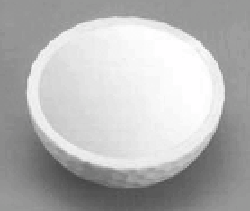Game Development Reference
In-Depth Information
The good news is that we have already learned the basic concepts we need to know to
create a golf simulation in Chapters 5 and 6. A golf ball in flight is simply a projectile that is
subject to the forces of gravity, aerodynamic drag, wind, and spin. In order to create a golf
simulation, you simply need to apply what you learned to the specifics of golf.
Equipment Specifications
The first thing to know when developing golf simulations is the size, weight, and other charac-
teristics of the equipment used to play golf. Let's start with the golf ball. Modern two-piece golf
balls usually have a hard rubber or synthetic rubber core surrounded by a plastic outer covering.
A cross-section view of a typical two-piece ball is shown in Figure 7-1. With a three-piece golf
ball, the inner core is surrounded by a tightly wound synthetic rubber string. There are also
multilayer balls that consist of three or more solid layers of various materials.
Figure 7-1.
The cross-section of a two-piece golf ball (Photo courtesy of UMX Inc., www.umei.com.)
Tidbit
Early golf balls were made of wood or leather crammed full of wet goose feathers. When the leather
ball and the feathers inside it dried, the ball became hard enough to hit 150-175 yards. Early golfers had to
stay away from the water hazards, however, because the leather balls became useless when wet.
■
There are a lot of different golf balls on the market these days, but they all share some standard
specifications. According to the United States Golf Association (USGA), the weight of a golf ball
should not exceed 1.62 ounces (0.0459
kg
). The diameter of a golf ball should be 1.68
in
(0.0427
m
).
You can use these numbers in your golf simulation.
In Chapter 6, the coefficient of restitution was introduced as a measure of how much
kinetic energy is lost during a collision. The coefficient of restitution between a golf club face
and golf ball depends on the type of golf ball. The value will typically be 0.78 for a standard two-
piece ball. Three-piece balls tend to be a bit softer, and the coefficient of restitution for them
will be about 0.68. All other things being equal, a higher coefficient of restitution will result in a
higher initial velocity for the ball and a longer distance. In response to new-technology drivers
that allowed the club faces to exert a spring-like effect on the golf balls they struck, in 1998 the
USGA set the maximum allowable coefficient of restitution between a golf ball and club face to
be 0.83.
Modern golf balls have dimples on the surface of the ball. The purpose of the dimples is to
cause the flow around the ball to become turbulent (a topic discussed in Chapter 5), thereby




